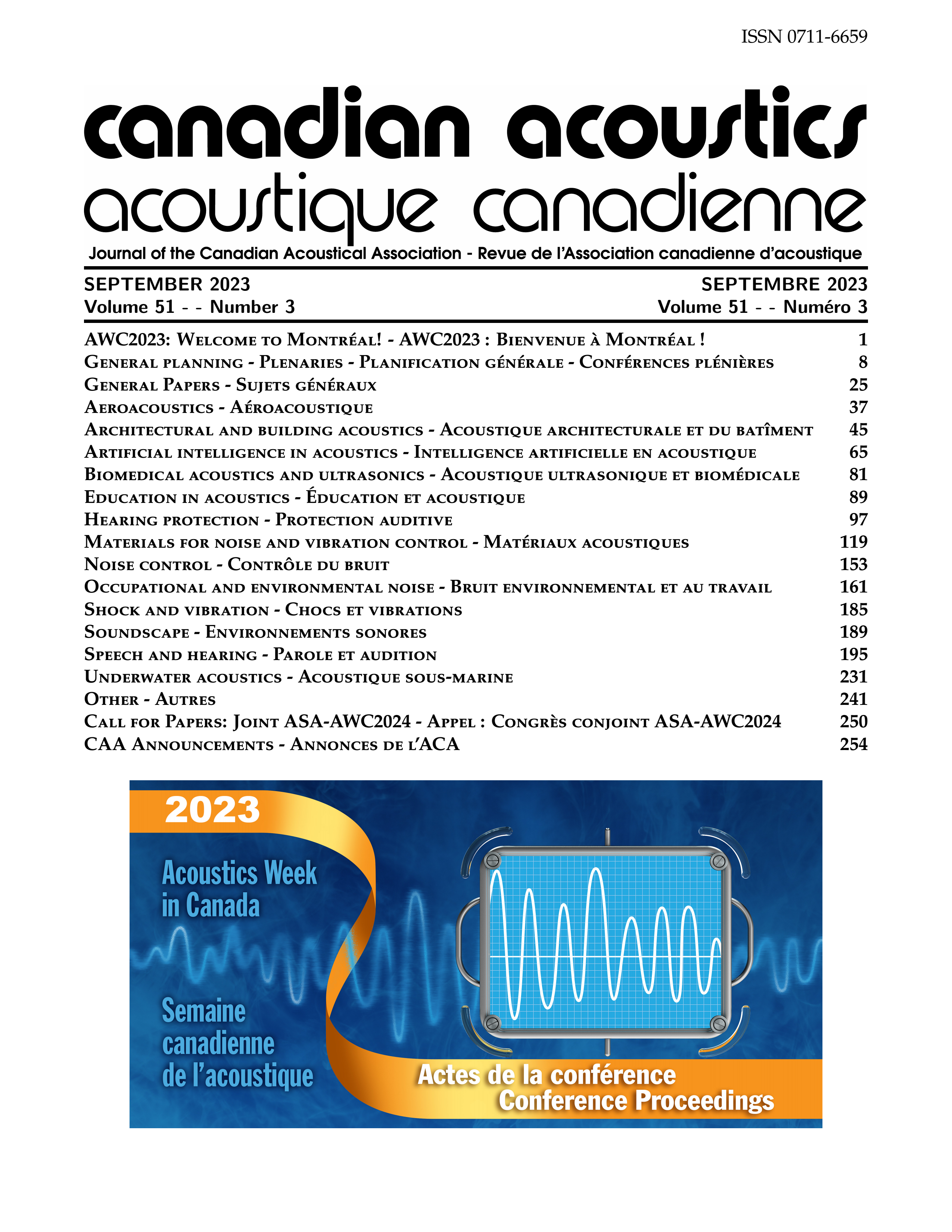Added Viscous Damping in Microperforated Plates Within a Nonlinear Acoustic Regime
Abstract
Microperforated plates (MPPs) are simple systems, classically used for their acoustic absorption capabilities. Recent works by the authors have shown that MPPs feature added viscous damping in the low-frequency range. Energy dissipation occurs through viscous friction mechanisms in the boundary layers of the microperforations coupled with fluid-solid interactions, which results into added viscous damping in a solid dynamics context. The vibratory response of such systems is well captured through an ad-hoc homogenization procedure, which yields two coupled partial differential equations (PDEs) governing the dynamics of a structural plate and a virtual plate of fluid. It was shown that the added damping reaches a maximum at a characteristic frequency, which only depends on the perforation diameter. However, these systems, likely to be used in hostile environments such as aircraft turbines, are known to be sensitive to mechanical and/or acoustic excitation levels. Two non-linear regimes of interest can be identified: (i) a non-linearity induced by high fluid flow, and (ii) a non-linearity induced by high fluid flow along with large structural displacement. In the present work, only the first configuration is considered. As the fluid velocity in the perforations increases, inertial phenomena occur in the perforations which affect the response of the structure. These effects can be captured analytically by introducing the Forchheimer correction, which depends on the relative fluid-solid velocity. This correction arises as an antisymmetric quadratic damping term in one of the above PDEs. The latter are solved numerically and quantitative studies are performed on the sensitivity of added damping to the excitation level. The proposed model is validated by experiments performed on a cantilevered MPP. Analytical and experimental results suggest that the added viscous damping depends on the relative fluid-solid velocity. The added damping effect can reach a maximum for a critical value, with all other independent parameters fixed.Additional Files
Published
How to Cite
Issue
Section
License
Author Licensing Addendum
This Licensing Addendum ("Addendum") is entered into between the undersigned Author(s) and Canadian Acoustics journal published by the Canadian Acoustical Association (hereinafter referred to as the "Publisher"). The Author(s) and the Publisher agree as follows:
-
Retained Rights: The Author(s) retain(s) the following rights:
- The right to reproduce, distribute, and publicly display the Work on the Author's personal website or the website of the Author's institution.
- The right to use the Work in the Author's teaching activities and presentations.
- The right to include the Work in a compilation for the Author's personal use, not for sale.
-
Grant of License: The Author(s) grant(s) to the Publisher a worldwide exclusive license to publish, reproduce, distribute, and display the Work in Canadian Acoustics and any other formats and media deemed appropriate by the Publisher.
-
Attribution: The Publisher agrees to include proper attribution to the Author(s) in all publications and reproductions of the Work.
-
No Conflict: This Addendum is intended to be in harmony with, and not in conflict with, the terms and conditions of the original agreement entered into between the Author(s) and the Publisher.
-
Copyright Clause: Copyright on articles is held by the Author(s). The corresponding Author has the right to grant on behalf of all Authors and does grant on behalf of all Authors, a worldwide exclusive license to the Publisher and its licensees in perpetuity, in all forms, formats, and media (whether known now or created in the future), including but not limited to the rights to publish, reproduce, distribute, display, store, translate, create adaptations, reprints, include within collections, and create summaries, extracts, and/or abstracts of the Contribution.


